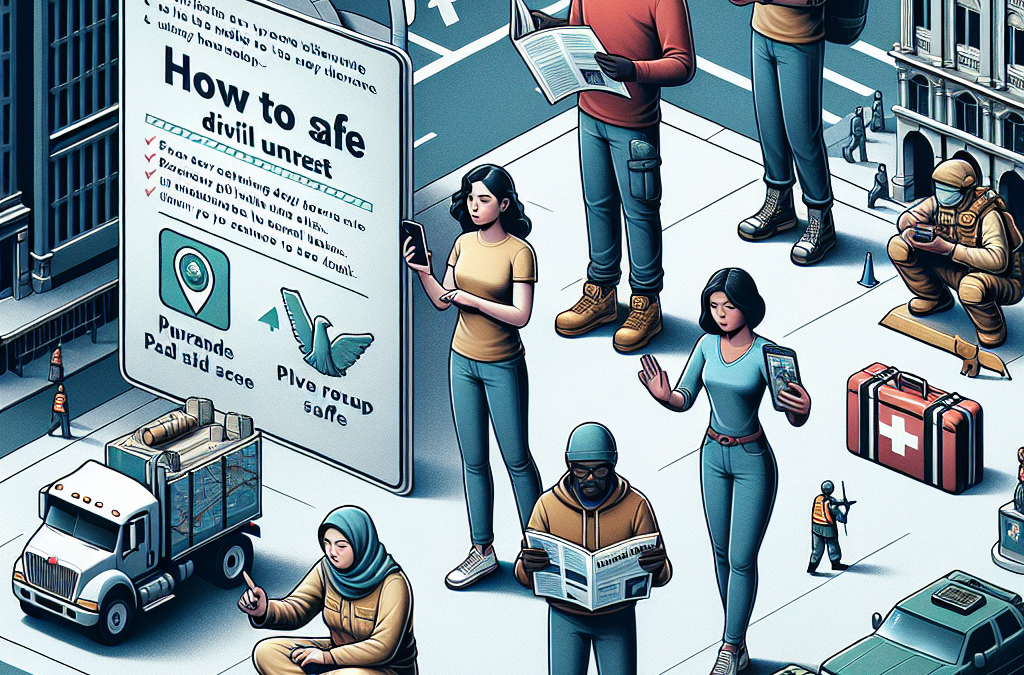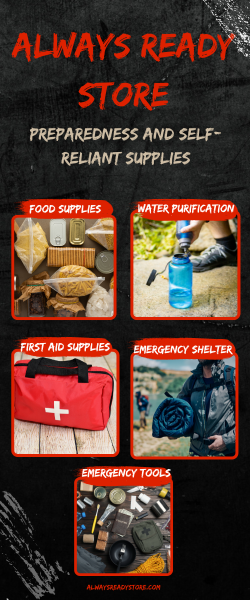Stay Informed
Follow Reliable News Sources
One of the first things I do when I hear there’s unrest is to turn on the news. It’s super important to know what’s going on, right? I always stick to reliable sources. We’ve got to sift through the noise and be sure we’re getting accurate updates about what’s happening around us. Sometimes it feels like the news can be sensational, so I focus on channels that maintain credibility.
Also, don’t forget about social media. While it can be a double-edged sword, platforms like Twitter can give real-time updates. Just be cautious though; not everything you see online is true. Cross-checking info from multiple sources has saved me from panicking over false alarms more than once!
Setting up alerts on my phone for breaking news allows me to stay in the loop wherever I am. I’d rather be overwhelmed with info than caught off guard. In moments of uncertainty, being informed is your best weapon.
Understand Your Surroundings
Before heading out, I always take a moment to survey my environment. Is there a crowd nearby? Are people congregating for a specific reason? Knowing my surroundings helps me gauge potential risks. I’ve learned the hard way that sometimes trouble can brew out of nowhere, and recognizing early signs can be vital.
Also, I make it a habit to know the locations of safe spots nearby. Whether it’s a police station, a government building, or just a good ol’ café, having a plan is key. If things get dicey, I want to have places in mind where I can seek refuge.
And let’s be honest, it’s not just about staying safe from conflict. Sometimes you just want to escape the noise and grab a cup of coffee until it’s safe to venture out again. Knowing the lay of the land can be a game changer.
Thank you for reading this post, don't forget to subscribe NOW for FREE!
Disengage When Necessary
This one’s a biggie for me. I’ve learned the hard way that it’s okay to walk away from a situation if it’s escalating. There’s no shame in choosing safety over bravado. If you find yourself in the midst of a protest or a crowd that’s turning volatile, my best advice is to exit the scene as discreetly and calmly as possible.
Resisting the urge to document everything on my phone has also been a crucial lesson. Sometimes, wanting to capture the moment can put you in harm’s way. Instead, I focus on getting to a safe zone and then assessing the situation if necessary. Trust me; there’s a time for releasing the shutter and a time for self-preservation.
Finally, don’t hesitate to seek help if things get out of hand. Whether it’s from law enforcement or fellow community members, reaching out for assistance can make a real difference.
Keep Your Communications Open
Stay Connected with Loved Ones
During unrest, I like to keep my friends and family in the loop. It gives everyone peace of mind knowing that I’m okay, and I also want to know they’re safe too. Group chats can be a lifesaver; it’s a quick way to pass on updates without having to individually reach out every time.
Before heading out, I usually let a friend or family member know my plans and intended routes. That way, if anything goes sideways, they’ll have an idea of my last known whereabouts. This simple step offers both me and them some extra reassurance.
Moreover, I make sure my phone is charged and I have backup power sources handy. Losing communication can lead to panic, so keeping my devices operational through this type of chaos is crucial.
Utilize Technology Wisely
Apps can be awesome tools during civic turmoil. I like to have a few downloaded that help with navigation, like Google Maps, but also ones that can keep me informed. Some apps send alerts about local disturbances or provide updates on safe areas in real-time.
Social media can be both an advantage and a disadvantage, so I use it wisely. Following local organizations that provide real-time updates can help ensure that I have access to factual information as situations evolve.
And if you have someone who can help from a distance, communicate with them. Having someone keeping an eye on the news can help guide your decisions. In essence, leverage those digital connections for your safety.
Prepare Your Emergency Kit
When unrest is on the horizon, I always make sure I have an emergency kit ready. I keep things simple: water, non-perishable snacks, and a first-aid kit. It’s surprising how calming it is to know that I have some essentials within reach if things take a turn.
I also include medications I might need, along with important documents. While it seems basic, having everything in one place ensures that I grab it quickly if I need to leave. I can’t tell you how many frantic searches I’ve avoided by being prepared.
Additionally, I pack a flashlight and spare batteries. Sometimes, disruptions lead to power outages or blocked roads and having a light source can keep me oriented. A little preparation goes a long way when the unexpected happens.
Be Aware of Legal Rights
Understand Your Rights to Assemble
As a citizen, I think it’s important to know my rights when it comes to demonstrations and civic engagement. It can be daunting to step out during unrest, but knowing that I have the right to voice my opinion can be empowering. I make a point to educate myself on local laws and regulations regarding gatherings.
However, I also remind myself that this isn’t a free pass to act recklessly. Understanding the framework can help me navigate situations much better and make informed decisions about participation or withdrawal from a protest.
Being prepared with this knowledge not only reassures me but also empowers me to stand by fellow citizens if something untoward happens. Community awareness of legal rights fosters a culture of support and protection.
Know How to Document Events
If I find myself in a situation where things turn chaotic, it’s essential to know how to document events conscientiously. This can include capturing video or photos, but here’s the catch: I prioritize my safety first. If documenting puts me in danger, I choose to step back.
When safely recording, I always make sure to be respectful of others’ privacy. The intent should never be to exploit someone else’s situation, and I believe it’s crucial to have empathy in such tense times. Remember, we’re all humans in distress, right?
Ultimately, I think documenting can play a significant role in providing accountability, but I emphasize staying aware of my environment. Balancing awareness and documentation can be tricky, but with practice, we can all share experiences while staying safe.
Have a Plan for Evacuation
Know Your Escape Routes
Planning an escape route can really save my skin during civil unrest. It’s like chess – you need to think a few steps ahead. I prefer to familiarize myself with multiple pathways out of crowded areas, as sometimes the most direct route might be blocked.
Mapping out escape routes might feel a bit paranoid, but trust me, a little forethought can go a long way. I find it useful to choose routes that take me away from potential conflicts rather than directly toward them. Keeping eyes peeled for alternate exits can provide that extra layer of assurance.
Also, when I’m at events, taking mental notes of where security personnel are positioned can guide my decisions should I need assistance or a faster exit. Better safe than sorry, right?
Practice Situational Awareness
I always stay tuned to what’s going on around me, even if I’m just grabbing lunch. It’s about cultivating that sixth sense for danger. This isn’t just being hyper-vigilant; it’s about being aware of body language, sounds, and any changes in the crowd’s behavior.
If things suddenly feel off, I pay attention and don’t hesitate to depart from the area. Trusting instincts has saved me on more than one occasion, and I believe it’s a skill anyone can cultivate with time.
Besides, I think it’s about being engaged with your community, too. The more familiar I am with the people around me and their usual behavior, the easier it becomes to detect when something’s not quite right.
Rehearse Your Exit Plan
Run through scenarios in your head; it may sound goofy, but I often visualize what I’d do if I needed to evacuate. Think of it as a fire drill for civil unrest. Preparing for potential situations mentally can bolster my confidence during an actual event.
Sometimes I even practice with friends and have discussions about what we would do together. This not only solidifies plans but helps keep everyone on the same page. A safer community starts with collective awareness and preparedness.
And if I’ve ever doubted the value of practicing, I look back on times when my gut instincts kicked in because I had prepared. Every little bit of readiness can make a significant difference when it counts the most.
Frequently Asked Questions
1. What should I do if I find myself in a Civil Unrest situation?
It’s crucial to remain calm. Assess your surroundings and decide whether it’s better to stay put or leave the area. Stay informed through reliable news sources and communicate with loved ones about your status.
2. How can I prepare my emergency kit for civil unrest?
Your emergency kit should include essentials like water, snacks, a first-aid kit, medications, important documents, and a flashlight with batteries. Keep everything in one place for quick access.
3. Are there legal considerations to be aware of during protests?
Yes, it’s essential to understand your rights to assemble and voice your opinion. However, ensure you’re aware of local laws to navigate situations responsibly.
4. How can I ensure my safety while documenting events?
Prioritize your safety first. If you can document events safely without putting yourself at risk, do so. Always avoid exploiting situations; approach documentation with empathy and respect.
5. What steps can I take if I feel unsafe in a crowd?
If you feel unsafe, trust your instincts to leave the area calmly and discreetly. Familiarizing yourself with escape routes and maintaining communication with friends can help elevate your safety during unrest.






